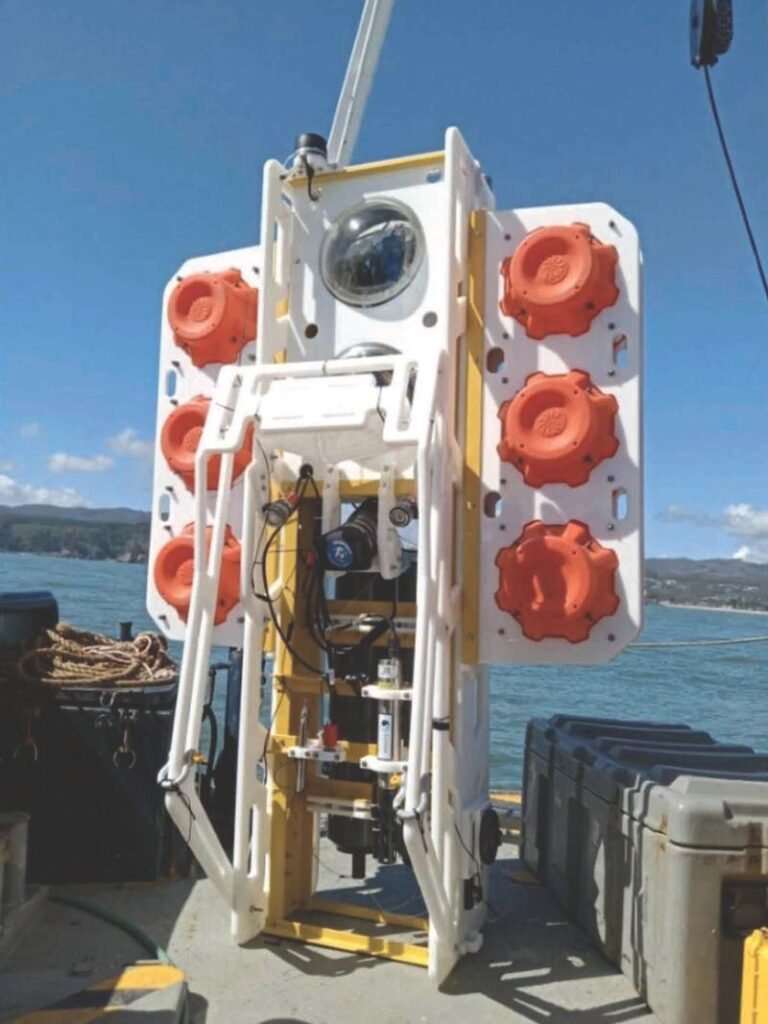The Chilean research team at the Universidad de Concepción has made significant strides in developing an autonomous Data Acquisition and Control (DAC) system for ocean landers. This innovative system combines high-resolution hydrographic profiling with energy-saving strategies to optimize performance in deep-sea missions.
The DAC system is based on the Atmega 2560 microcontroller board, offering a robust and flexible platform for data acquisition and control. By utilizing open-source hardware components and software tools, the Chilean researchers were able to accelerate the development process and create a cost-effective solution for deep-sea exploration.
One of the key features of the DAC system is its power-saving capabilities. The Mega2560-Core microcontroller can enter sleep mode with minimal power consumption, allowing for efficient management of energy resources. By using the microcontroller to switch power-hungry sensors on and off, the system can extend its battery life and optimize performance during long-duration missions.
In addition to power management, the DAC system includes a precision real-time clock (RTC) for timekeeping and data synchronization. This RTC ensures high accuracy and reliability, essential for collecting accurate data in deep-sea environments. The system also incorporates a SanDisk Secure Digital Micro SD Card for data storage, providing a reliable and secure solution for storing mission-critical information.
Overall, the Chilean research team’s hybrid DAC system represents a significant advancement in deep-sea exploration technology. By combining high-resolution profiling capabilities with energy-saving strategies, this system opens up new possibilities for studying benthic environments in hadal depths. With continued development and refinement, this innovative DAC system has the potential to revolutionize deep-sea exploration and expand our understanding of the ocean’s most remote regions. The successful deployment of the Integrated Deep-Ocean Observation System (IDOOS II) lander in the Atacama Trench marks a significant milestone in deep-sea exploration. The system’s adaptive configuration and real-time data acquisition capabilities have enabled researchers to study the physical, geological, and biological structures of this unexplored region with unprecedented detail.
The lander’s deployment during the IDOOS II cruise revealed significant hydrographic variability in the water column, including temperature fluctuations and dissolved oxygen levels indicative of diverse ecosystems at different depths. Additionally, biodiversity studies using environmental DNA analysis have uncovered a rich array of metazoans at depths exceeding 3000m, showcasing the vast biological diversity present in ultradeep ocean environments.
Despite the challenges of preserving genetic material for metabolic analyses in extreme conditions, innovative protocols have yielded valuable insights into the adaptations that allow organisms to thrive in the hadal zone. Future advancements in in-situ preservation techniques and robust technologies will be essential for further exploration of the biological processes that sustain life in these extreme environments.
Overall, the success of the IDOOS II lander in the Atacama Trench highlights the system’s versatility and potential for future research endeavors. By combining advanced technologies with adaptive control systems, researchers can continue to uncover new discoveries and expand our understanding of the deep ocean and its inhabitants. The achievements of the IDOOS II mission pave the way for further exploration and discovery in some of the most remote and least understood regions of the sea, offering new insights into the mysteries of the deep ocean.
Exploring Hadal Zones: Advancements in Oceanographic Instrumentation
Exploring the deepest parts of the ocean, known as hadal zones, presents a unique set of challenges for researchers. Limited availability of oceanographic instruments capable of operating in these extreme conditions has been a significant hurdle. However, recent advancements in technology have made it possible to collect valuable data from these depths, thanks to innovative solutions such as Aanderaa sensors for dissolved oxygen measurements.
One remarkable accomplishment in this field is the integration of Aanderaa sensors with the EdgeTech BART acoustic release, which allows for direct command and control of seafloor scout in-situ. This integration not only streamlines data collection but also enables researchers to conduct long-term deployments in hadal conditions.
Challenges and Innovations
Despite these advancements, more work is needed on event triggers, including accelerometers, motion sensors, and pressure sensors. Sensor manufacturers should make external control of their devices possible to enhance the capabilities of underwater vehicles. Additionally, advancements in hadal depth actuators, such as solenoids and motors, are essential for conducting research in these challenging environments.
Further development of pressure-compensated LiPo batteries can provide more power safely for less offsetting buoyancy, allowing for longer missions in hadal zones. Integration of recovery beacons inside the upper glass sphere can result in cost, complexity, and weight savings, making underwater vehicles more efficient and versatile.
Acknowledgments
This article is based on the IEEE-OES paper “Versatile Data Acquisition and Control System for Free-Fall Underwater Vehicles: Exploring Hadal Waters”. The full IEEE text can be found here.
We would like to acknowledge the authors of the IEEE-OES paper: Víctor Villagrán, José I. Cifuentes, Óscar Pizarro, Nadin Ramírez, Pablo Oliva, Kevin Hardy, Carolina E. González, and Osvaldo Ulloa.
About the Authors
Víctor Villagrán is a Chief Engineer with the Department of Geophysics and the Director of Technological Development at the Centro de Instrumentación Oceanográfica, Universidad de Concepción, Concepción, Chile ([email protected]).
Osvaldo Ulloa is the Director and Principal Investigator of the Instituto Milenio de Oceanografía (IMO) and a Full Professor with the Department of Oceanography at Universidad de Concepción. His research focuses on biological oceanography, with significant contributions to the study of ecosystems in extreme marine environments ([email protected]).
“Lander Lab” is a hands-on column of Ocean Lander technologies, dedicated to serving the global ocean lander community. Comments and suggestions for future articles are welcome.
For inquiries, please contact Kevin Hardy at [email protected].

